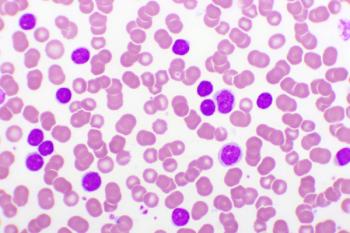
MG Symptoms PRO Potential New Tool to Evaluate MG Symptom, Disease Severity
Investigators evaluated the utility of the MG Symptoms Patient-Reported Outcome (PRO) within the armamentarium of instruments that currently evaluate myasthenia gravis (MG) severity.
The comprehensiveness of its content and its modular nature were cited as benefits of the MG Symptoms Patient-Reported Outcome (PRO) instrument in adding to knowledge of the severity of
With this knowledge, clinicians can more accurately monitor their patients and evaluate investigative treatment effectiveness, researchers wrote in
The phase 2a, multicenter, randomized, double-blind, placebo-controlled
Overall, the study authors noted that each of the 4 scales they evaluated reliably measured ocular, bulbar, and respiratory muscle weakness. However, overall muscle weakness fatigability was only accurately captured by the MG Symptoms PRO and QMG, and neck muscle fatigability by the MGC and MG-ADL. In addition, the MG Symptoms PRO was shown to be more comprehensive, in that it covered general fatigue, limb and axial weakness, and limb heaviness vs just limb weakness by the QMG and MGC vs the MG-ADL, which does not measure limb weakness.
The mean (SD) patient age was 51.9 (15.1) years; 62.8% of the study population was female patients; most patients were from Canads (25.6%, Belgium (23.3%), or the United States (20.9%); 93.0% of patients were acetylcholine receptor antibody positive; 2.3% of patients were anti–muscle-specific kinase antibody positive; and the most common Myasthenia Gravis Foundation of America disease classes was class IIIa (34.9%), class IIb (27.9%), or class IIa (16.3%).
At baseline, mean scores were as follows:
- QMG: 15.6 (3.9)
- MGC: 15.6 (6.2)
- MG-ADL: 7.1 (3.1)
- MG Symptoms PRO:
- Bulbar muscle weakness: 24.0 (17.7)
- Muscle weakness fatigability: 43.8 (22.4)
- Physical fatigue: 49.2 (21.7)
- Ocular muscle weakness: 31.5 (20.7)
- Respiratory muscle weakness: 38.0 (25.8)
When speaking to the comprehensive nature of the MG Symptoms PRO, the study authors noted that its high quality can be attributed to its evaluation of significantly more items compared with the other scales, “therefore, it provides greater granularity in terms of coverage of the different manifestations of MG, even within each symptom category.” The novel measure also contains a recommendation to evaluate the signs and symptoms of MG for 7 days prior to invoking its use vs no defined evaluation periods in the remaining 3 instruments, leading the authors to note they may not accurately capture patient symptom experiences.
Correlations of 0.57 to 0.71 were seen for the composite measures of overall MG symptom severity on the MG-ADL, QMG, and MGC, and of 0.56 to 0.74 for those instruments with the MG Symptoms PRO muscle weakness fatigability score.
“The newly developed MG Symptoms PRO complements the set of currently widely used measures of disease activity and severity of MG,” the authors conclude. “It provides greater granularity for the assessment of the cardinal symptoms of MG, providing more extensive coverage of the severity of MG, capturing even for mild symptoms that may be imperfectly captured by other measures.”
They also highlighted its ability to fill the gap on fatigue measurement and that its modular nature means individual assessment of each symptom can produce a more comprehensive and individualized overall picture of patient disease severity.
References
1. Myasthenia gravis. Mayo Clinic. June 22, 2023. Accessed October 31, 2023.
2. Regnault A, Morel T, de la Loge C, Mazerolle F, Kaminski HJ, Habib AA. Neurol Ther. 2023;12(5):1573-1590. doi:10.1007/s40120-023-00464-x Measuringoverall severity of myasthenia gravis (mg): evidence for the added value of the MG Symptoms PRO.
Newsletter
Stay ahead of policy, cost, and value—subscribe to AJMC for expert insights at the intersection of clinical care and health economics.












































